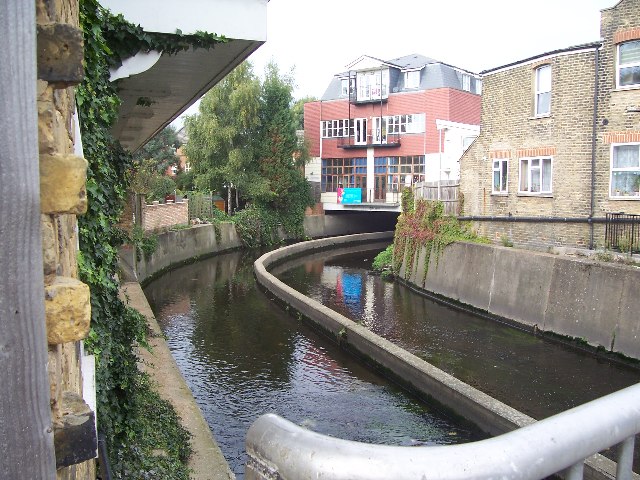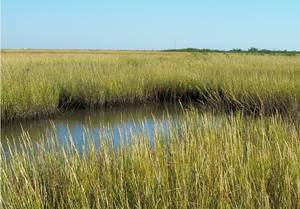Revitalising Urban Rivers - Planet Earth Online
Interview with
Rivers in cities and towns have had a rough time over the years - often diverted, hidden or lined with concrete. Some even end up as sewers!
But now, around the world, urban rivers are undergoing a revival, many becoming havens for wildlife. Planet Earth Podcast presenter, Richard Hollingham, has been to visit a project in South London where conservation science is helping to turn a long-neglected river into an urban asset...
Richard H. - I'm in Carshalton near Croydon in south west London. 200 years ago, this was a rural village, now it's part of the vast suburbs encircling London. The river at its centre, the Wandle, once flowed through fields of crops, now it's surrounded by roads, railways, houses and businesses. And rivers in places like this often end up neglected, polluted and unloved.
Bella - A couple of hundred years ago, this area was much more rural.
 Richard H. - Bella Davies from the Wandle Trust.
Richard H. - Bella Davies from the Wandle Trust.
Bella - And the river had already been impounded by lots of mills. It's actually known as one of the hardest worked rivers in the world for its size. Moving forward from then, we had the industrial revolution and an awful lot of pollution went in, there was general disregard for rivers across the country. By the 1960s, it was an open sewer and, more or less, biologically dead. Through the '70s, it got very canalised and made very straight to help with flood defence issues. Rolling forward to now, we're trying to restore many of the natural processes and natural habitats that would have been there.
Richard - The Trust has used the expertise of Angela Gurnell from Queen Mary University of London. Her research has found that even rivers lined by concrete, covered with bridges or interrupted by weirs are still worth saving.
Angela - The surprising finding we had was that actually certain types of engineering are compatible with quite a varied and aesthetically pleasing river, and if the water quality is good, quite strong ecological functioning of these rivers.
Richard H. - So really, all is not lost even if it is surrounded by concrete and in an urban area.
Angela - Increasingly there's opportunities in situations like this where we're standing where the rivers can be bound on one side by a road, on the other side by housing and above us by a railway bridge. You can still do quite a lot to improve that section by just gently pushing away at the engineering and removing the bits that you actually don't need and allowing the river to recover in a patchy way.
Bella - And what we did  was to knock out part of the weir and to channel the water through that, so the same volume of water is going through a smaller space, so it's going much faster as it would more naturally. We've introduced about 60 tonnes of gravel through this area and we've sculpted that so it has a range of different habitats and within that different morphologies to it. We've narrowed the river upstream and put in place new banks and taken out some of the silt that was held behind the weir. Over the top we've put in over a thousand native plants.
was to knock out part of the weir and to channel the water through that, so the same volume of water is going through a smaller space, so it's going much faster as it would more naturally. We've introduced about 60 tonnes of gravel through this area and we've sculpted that so it has a range of different habitats and within that different morphologies to it. We've narrowed the river upstream and put in place new banks and taken out some of the silt that was held behind the weir. Over the top we've put in over a thousand native plants.
Richard H. - And that has meant the Wandle not only looks much more natural, but it's seen the return of fish and the birds that feed on them like the kingfisher.
But further upstream, the rivers disappeared completely. In a park near the centre of Croydon, I met up with Tom Sweeney from Croydon Council.
Tom - In 1967 the council culverted the river; it was buried underground. But in a few weeks time, we will have the signs of the River Wandle re-emerging in the park.
Richard H. - So where is it?
Tom - We're standing on top of it at the moment!
Richard H. - We're on a slightly muddy area of the field here.
Tom - We have some red lines over here which denote where we're going to put the new headwall structure for the river and it then stretches back towards the centre of Croydon, through the middle of that open field there, to the other end of the park.
Richard H. - So you're essentially turning a pipe back into a river?
Tom - Yes.
Richard H. - And as we watched, the digger began scraping away at the earth to reveal the top of the culvert and the long forgotten waterway. Angela Gurnell...
Angela - By opening up these culverted sections, we connect the sections of river back together again and that's fantastic from an ecological point of view because it allows the species to move up and down the system.
Richard H. - Waterways in towns and cities may never return to their former glory, free to meander through the landscape, untouched by civilisation but a few changes backed by scientific expertise are transforming them back into corridors for wildlife.









Comments
Add a comment